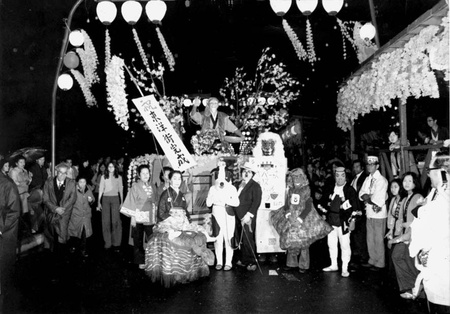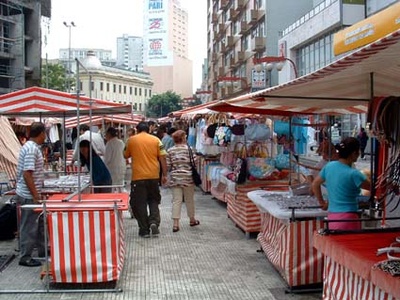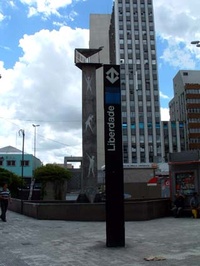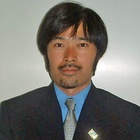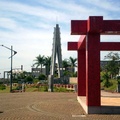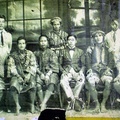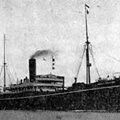Galvão Bueno Street in the Liberdade District of São Paulo was once said to be "in the day, as quiet as the night;" when Cine Niterói and three other movie theaters began business in the district in the early 1950s, it suddenly became a bustling area lit up with neon lights. By 1964, building was completed for the São Paulo Bunka Kyokai (São Paulo Culture Association, which later became known as the Brazil Nihon Bunka Kyokai, or Brazilian-Japanese Culture Association), and the area, from Liberdade Plaza through Galvão Bueno Street to São Joaquim Street, became recognized by the local Nikkei community as a united neighborhood.
This was the birth of the district that would later develop into the present-day Bairro Oriental (Oriental Town).
On June 19, 1958, preceding the completion of the Bunkyo Building, the São Paulo Japanese Culture Association organized the 50th Anniversary Celebration of Japanese Immigration in Ibirapuera Park. Prince and Princess Mikasanomiya and 50,000 Nikkei attended, making it the first time the royal family had visited Brazil since the start of Nikkei immigration. The celebration was the biggest event in the Brazilian community for the Nikkei immigrants up to that point. In the new capital of Brasília, then in the process of being built, the visitation of the royal family triggered the establishment of the Brasilia Japanese Association.
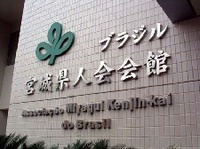
Foto 7-1: Associação da Província de Miyagi. Uma das associações de províncias que ficam no Bairro Oriental (Foto tirada pelo autor 2006)
In this way--through the settlement of Nikkei immigrants and the establishment of Nikkei society in the 1950s, the founding of unified organizations, and the recovery of the Japanese economy--the proliferation of “Japanese Culture” from the Brazilian Nikkei community to the rest of Brazilian society began (Negawa, 2005, pp. 192-193).
Though numerous prefectural associations of various prefectures had been established starting in the late 1950s, most were located in and around current day Bairro Oriental (Photo 7-1). In the 1970s, due to the rapid economic growth under the military government, Japanese businesses made large-scale advancements and Brazilian-Japanese relations were strengthened, causing a rapid increase in the spread of “Japanese culture." One could say that this was when the mindset of “our new homeland” began to take root, a mindset which would later be a necessary component for the establishment of the Japantown.
Meanwhile, the late 1960s was a time of large-scale redevelopment in the Liberdade District and the São Paulo city center with the construction of the South-North subway line and the opening of a road traversing from East to West. This put the newly formed Japantown at risk of disappearing; according to the stories of Nikkei shop owners of the time, many sold or moved their businesses due to the noise and dust from the construction, which lasted for years. They said that “business couldn’t be done” (NEGAWA, 2001, pp.111-112).
“Every day, they would dig here and there, with so much dust. Business just couldn’t be done. One evening, our roof suddenly collapsed and the whole family quickly evacuated towards Tamandaré Street. I don’t know how many times I told my wife we should just quit doing business here,” reminisced Mr. MK, who managed a restaurant in Liberdade Plaza at the time.
However, as if in resistance against these negative conditions, the Association of Liberdade Business Friendship centering around Nikkei leaders such as Mr. Tanaka and Mr. Mizumoto began to increase in activity. Cine Niterói moved from Galvão Bueno Street to Liberdade Avenue, and the current Osaka Bridge was opened in this area. Mayor Paulo Maluf, who attended the opening ceremony of the bridge, in accordance to the activity of the Nikkei leaders, issued a statement saying “I support the development of the Oriental town of Liberdade District” (ACAL, 1996, p.18).
In June of 1969, the city’s tourism council accepted the plan to name the area Little Tokyo (Ibid., p.18). Since the 1960s, the city of São Paulo had been working to found a tourism spot in the area and create an image of a “multi-ethnic São Paulo.” There was also a push to depict an exotic, oriental town zone for tourism purposes (Negawa, 2006, p.138-139). Due to such activity, the Nikkei business owners worked frantically to keep up with the redevelopment of the central portion of the city. As a result of this activity, on November 27, 1969, in accordance with the end-of-the-year bargain sale, the Business Friendship Association held the first Oriental Festival in Liberdade Plaza with events such as Bon odori .
November of 1974 is recognized by the Association of Commerce and Industry of Liberdade (ACAL = the later Association of Commerce and Industry of Liberdade) as the birth month of São Paulo’s Oriental town. This was before the completion of the Liberdade subway station and coincides with the end of the first part of the Oriental town construction. During this first period of construction by São Paulo city and ACAL, elements of Oriental town such as the street-side ornaments, Japanese garden, Ōtorii , Suzuran lamps, and Tomoe-pattern tiles were set up. At the time, Liberdade Plaza and Galvão Bueno Street were decorated and a costume contest and parade were held (Photo 7-2). For Nikkei residents who began to settle permanently after the war and support the urbanization of the city, the hope of "our new homeland" took form in the founding of Oriental town in the 1970s.
By February of 1975, the South-North line from Liberdade Station to Jabaquara Station was completed. With the appeal of the newly opened Liberdade Plaza (located above Liberdade Station) and shopping arcade, the first Oriental Fair was held. Immigration from Korea and Taiwan had already started in the mid-1960s so by this time, there were many Korean and Taiwanese stores doing business in Oriental Town. The fair was named “The Oriental Fair” due to the presence of these Korean and Taiwanese businesses. However, the fair was not only called “Feira oriental ” (Oriental Fair) in Portuguese, but also referred to as “Feira de artezanato japonês ” (Japanese Artisan’s Fair), showing the strong Japanese presence at the fair since its start (See Photo 7-3).
Previously, I asked Mr. YA, former vice-president of Association of Commerce and Industry of Liberdade why this ethnic business area was not named “São Paulo Little Tokyo” or “São Paulo Japantown.” He said, tilting his head in contemplation, “There was a suggestion for the name, ‘Japantown.’ At the time, much of the population was Nikkei and the Nikkei members were supporting the idea. However, I believe the city decided the area be called ‘Bairro Oriental ’ to facilitate good relations between Japanese, Chinese, and Korean people.”
When the subway station first opened, the businesses in Bairro Oriental were reported to comprise 45 restaurants, 40 clubs and bars, 12 stores selling oriental products, 12 souvenir shops, 15 candy stores, and some travel/tourist companies (Paulista Newspaper , 1974, No. 6429). Adding in the previously mentioned popularity of the Nikkei movie theater and the first annual New Year’s decoration ornaments on Galvão Bueno Street in 1970 (Onishi, 1990, p.13), the area must have already acted as a large-scale entertainment district.
Today, Liberdade Station has an average of 21,000 passengers daily (Photo 7-4). Besides being an important point of access to Oriental town from all over the city, the station acts as a meeting place for young J-pop fans who come to attend the Oriental Fair on Sundays (Photo 7-5).
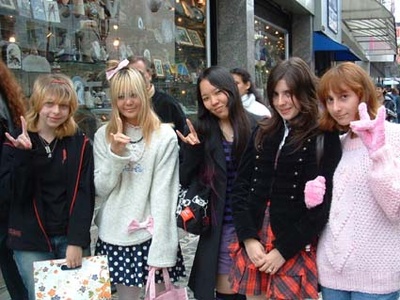
Foto 7-5: Garotas fãs de J-POP que se reunem todos os domingos no Bairro Oriental (Foto tirada pelo autor 2007)
References
ACAL (1996) Liberdade . ACAL
ONISHI, Sadao (org.) (1990) Liberdade . ACAL
NEGAWA,Sachio (2005) “Nippaku Hikaku Bunkashi no Kanôsei—São Paulo Tôyôgai ni okeru Shindentôgyôji no Sôshutsu ”. In. Anais do III Congresso Internacional de Estudos Japoneses no Brasil e XVI Encontro Nacional de Professores Universitários de Língua, Literatura e Cultura Japonesa . Brasília, UnB, pp. 191-202.
NEGAWA, Sachio (2006) “Multi-ethnic Toshi São Paulo ni okeru ‘Nihon bunka’ no Hyōshō — tōyōgai ni okeru shin-dentō gyōji wo chūshin ni” [The Symbol of Japanese Culture in Mutli-ethnic São Paulo - Centering on the New Traditional Events in Oriental town-]. In. Heisei 16-17 nendo Kagaku Kenkyūhi Hojokin (Kiban Kenkyū C) Kenkyū Seika Hōkoku-sho — Gendai Burajiru ni okeru Toshi-mondai to Seiji no Yakuwari [Heisei 16~17 Scientific Research Fund A subsidiary Aid (Basis Research C) Research Result Report: City Issues and the Role of Government in Current Day Brazil] , pp.129-140
NEGAWA(2001)“Um Comerciante Japonês: História de Vida no Bairro Oriental de São Paulo”, In. Estudos Japoneses 21 , São Paulo, FFLCH/USP, 2001, pp.101-114.
© 2008 Sachio negawa


